12 Amazing Destinations For Travel Photography
- Andrew Marty
- Jun 4
- 20 min read
Where is your next photoraphy trip?
Scrolling through Instagram. Flicking through travel magazines. Watching Netflix docos.
Do you find yourself drifting off into wanderlust and dreaming about your next photography destination, but always struggling to decide where to go?
In no partiocular order, here are the 12 places that I believe every travel photographer needs to have on their bucket list.
Volcanoes National Park - Rwanda.
One of Africa's Most Iconic Experiences
Photographing the mountain gorillas in the wild should be on every photographers bucketlist. There is something
The story behind the survival of this species adds to the intrigue - from the brink of extinction, the reformed poachers now employed as guides and the bringing together of a nation that was once ripped apart by civil war.
If you want the ultimate experience, stay at One&Only Gorilla's Nest - one of the most incredible properties I have been to. There are several other lodges around Volcanoes National Park, but this One&Only property is simply amazing.
You will need to book your gorilla trek experience in advance and it costs around USD1500 per person. The time spent with teh gorillas is highly regulated to protect their natural state. Each small group of tourists is allocated a family group that they will hike to find and then spend an hour of allocated time with.
Tip: You are unlikely to need long telephoto lenses for the gorillas, as most times they are actually very close! 24-70mm and 70-200mm are the most you will need. The time goes unbelievably fast, so it is an almost impossible balance between trying to capture images and simply taking in one of teh most incredible experiences with these beautoful animals. Focus on a mix of "portrait", wide angle, fine detail shots, as well as capturing some of the trek experience to create a portfolio from this destination.
Consider also including a visit to Nyungwe in the south-west of Rwanda - teh National Park is home to large populations of chimpanzees and other primates. The tea plantations in the area also make for wonderful photography opportunities.



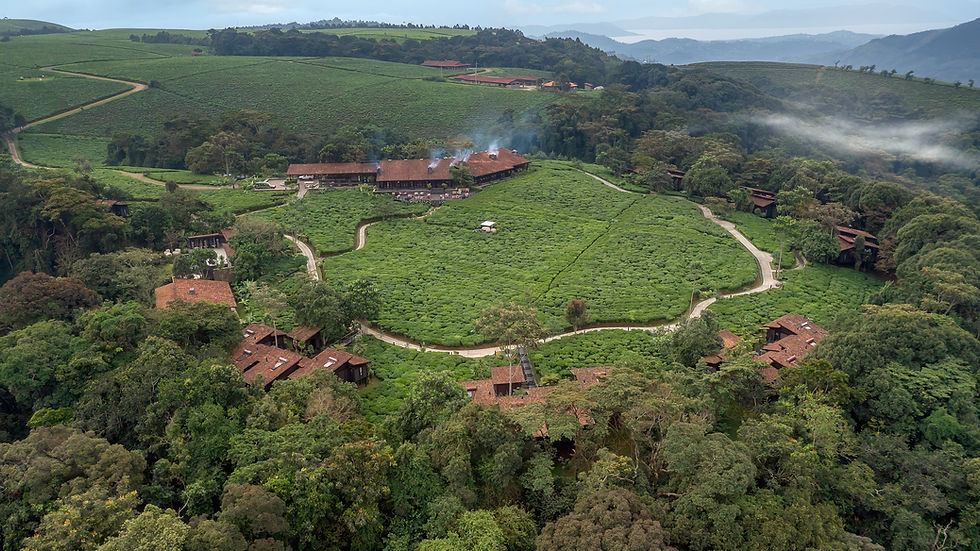

Deksam Plateau - Socotra (Yemen)
One of the Last Unexplored Destinations

Until a few years ago, the majority of people had never heard of Socotra! When the island 400km off the coast of Yemen re-opened for tourism in 2021, photographers returned and created significant social media interest which lead to a growing toursim industry. Socotra is now seen as a destination for adventure seekers and those wishing to photograph some of the most unique landscapes on earth.
Where to go: There is a direct flight each week from Abu Dhabi and once on the island, you will need to be part of a guided tour. Accomodation options are very limited and the best/most practical way to see Socotra is staying in small tents at the many informal camp sites. Facilities are improving each year and many sites now have basic bathroom/shower facilities. This destination is certainly not 5-star and is absolutely one for those who are comfortable with getting away from the comforts of big cities!
There are limitless places to explore and photograph in Socotra - the fishing village at Qalansia, the towering sand dunes on the coast of Arher and the blooming bottle trees of Homhil. However, most people that travel to Socotra are caotivated by the unique Dragon Blood Trees that grow mostly in the plateua around Deksam. These endemic trees are like something from another planet and make incredible subjects, especially for astro photography. There are almost infine locations around Deksam to find photogenic dragon blood trees. Using PhotoPills app, you can align the Milky Way to arch above the trees and create other-worldly compositions.
I guide 2 photo tours each year to Socotra and both have a strong focus on capturing the milky way with these iconic trees.
Tip: There isnt a lot of access to mains power for recharging cameras etc, so consider having extra batteries, car inverters, power banks and solar chargers.


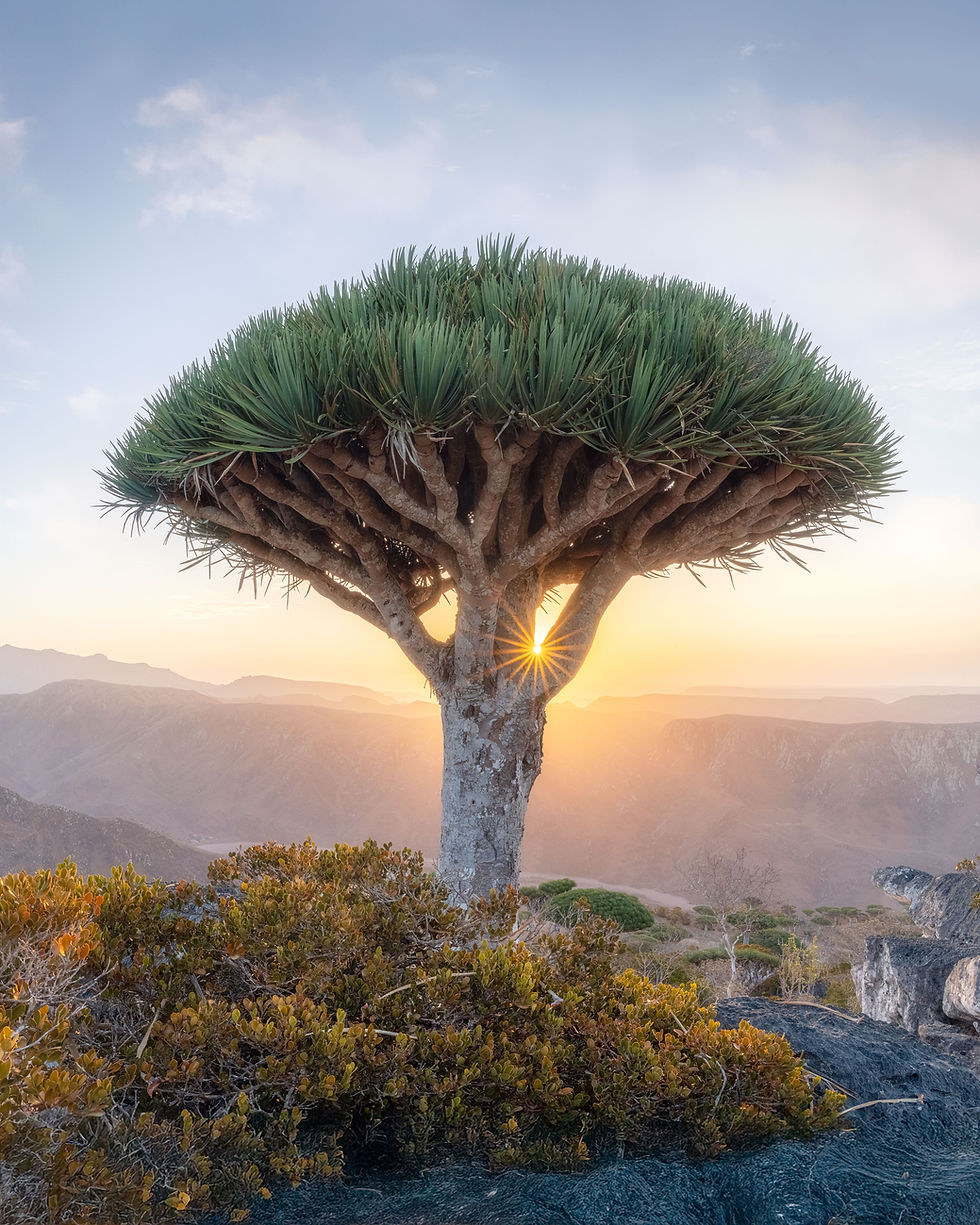




Kazbegi - Georgia
One of the Most Underrated Countries For Travel

Georgia is such a perfect destination for travel - safe, affordable, easy and fantastic food.
Nestled in the heart of the Caucasus Mountains, Kazbegi, also known as Stepantsminda, is a perfect destination for landscape photographers. Kazbegi is a few hours drive from Tblisi and can also be reached via the scenic cable-car, over the mountains from the ski resort town of Gudauri.
The most iconic location in Kazbegi is Gergeti Trinity Church, perched on a hilltop at 2,170 meters with Mount Kazbek as a stunning backdrop. Sunrise and sunset light wrap the scene in golden tones, creating the perfect moment to capture drama and serenity in a single frame.
The perfect place to stay in Kazbegi is Rooms Hotel, which has terrace and balconies with stunning views of Mount Kazbeg and Gergeti Church.
Gergeti Trinity Church can be reached by taking a car up the winding road (in Winter the road is often partially closed and depending on the amount of snow, you may still be able to walk the rest of the way. The views of the church are opposite from those in the town and Rooms Hotel and provide a wonderful composition, especially at sunset with the soft light bathing the mountains behind.
Beyond Gergeti, hiking trails around Kazbegi lead to waterfalls, alpine meadows, and panoramic mountain views. An ideal place to visit is Juta Valley - there is a small guest house (closed in Winter) that is at the entrance to the valley and a great place to stay for some sunrise and sunset photography.
The village of Kazbegi itself offers rich textures, rustic charm, and candid street scenes with friendly locals, perfect for storytelling photography.
Tip: Visit in late spring or early autumn for the best mix of dramatic skies and manageable weather. In Spring you will also have the benefit of beautiful wild flowers, especially in Juta Valley.
Another amazing place to visit if you travel to Georgia is Ushguli - a village nestled in a valley, surrounded by snow capped mountains. The traditional homes have iconic towers, which create a beautiful frame. Often people will enter Georgia via teh capital, Tblisi - a nice city to spend a coupl of days exploring and enjoying Georgian food. There are some really nice views overlooking the old town in Tblisi, which has a unique charm with the colourful traditional homes.

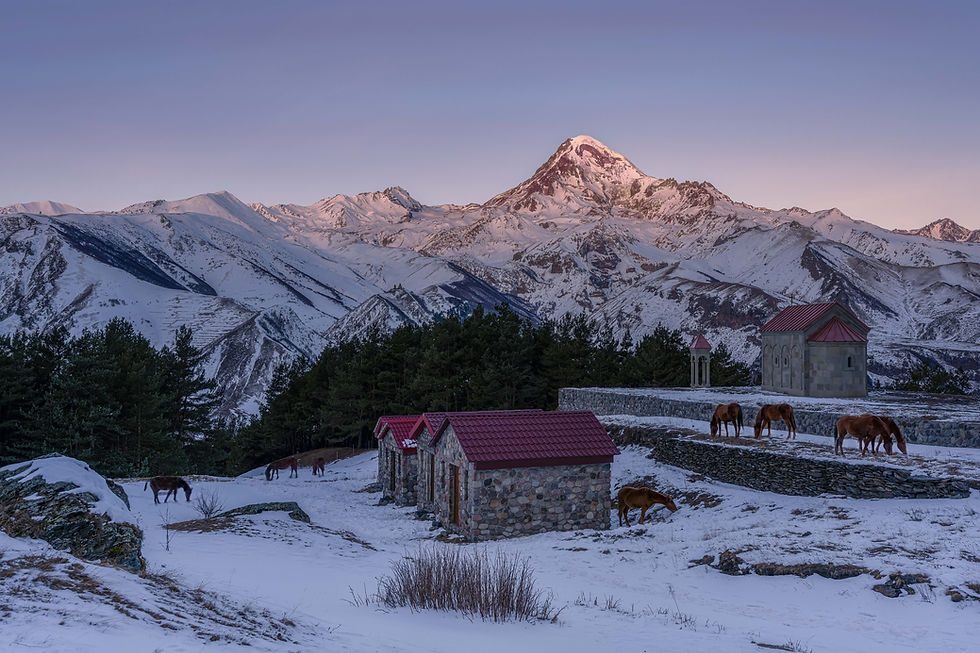



Shark Bay - Australia
Aerial Photography of Western Australia's Stunning Coastline

Shark Bay, a UNESCO World Heritage site on Western Australia’s remote Coral Coast, is a surreal dreamscape best experienced from the air. Known for its turquoise shallows, winding sandbanks, and contrasting red cliffs, this otherworldly region becomes pure magic through the lens of an aerial photographer.
For the ultimate shoot, book an open-door flight with a local operator such as Shark Bay Aviation. Open doors mean no reflections, no obstructions—just you, the wind, and the raw beauty below.
Tip: Use a fast shutter speed (1/2000 or faster), a polarizing filter to cut glare, and a wide to medium zoom lens (24–70mm and 70-200mm) to frame both sweeping vistas and intricate patterns in the sand and sea. Note, you wont be able to change lenses during the flight, so having 2 bodies that are strapped in will give you flexibility.
Shark Bay’s highlights from the air include:
Big Lagoon and Little Lagoon, where vibrant blues shift dramatically with the tides.
The Peron Peninsula, with its striking contrast between rust-red earth and bright white beaches.
The abstract salt farms of Useless Loop which create some incredible frames from above.
And of course, the shadows of dugongs, dolphins, and rays, often visible in shallow waters.
Best light is mid-morning or late afternoon when the sun is low enough to create long shadows but high enough to reveal the swirling colors of the sea. Avoid shooting at high noon when glare can flatten your images.
Shark Bay from above offers a unique kind of photography—abstract, environmental, and deeply humbling.
We stayed at Monkey Mia Resort, where you can see dolphins up close early in the morning and emus wandering around the property. You can also spend a couple of days driving north from Perth, stopping along the way for more aerial photography opportunities - the salt farm at Hutt Lagoon, coloured lakes of Pithara and the remote talc mines. Alternatively you can fly from Perth into Shark Bay on regional airlines.







Jaipur - India
India's Pink City

Jaipur, the capital of Rajasthan, is a vibrant blend of royal heritage, architectural wonders, and bustling street life—an absolute playground for photographers. From towering forts to intricate stepwells, colorful markets to iconic gateways, every corner offers a new frame to capture.
My favourite location and a great place to start is Amber Fort, perched high above Maota Lake. Arrive early to photograph the soft morning light spilling across its sandstone walls and mirrored interiors. Climb to the ramparts for sweeping views of the hills and ancient defense walls snaking into the distance. This is a perfect place for some lifestyle photography with a model in traditional Indian dress.
Just a short walk away lies the geometric beauty of Panna Meena ka Kund, an 8th-century stepwell. Its symmetrical staircases are a dream for those seeking order, patterns, and a sense of timelessness. Go early or late in the day to avoid harsh shadows and crowds.
Head into the city to explore Bapu Bazaar, where color bursts from every stall—textiles, shoes, spices, and bangles in every imaginable hue. It's ideal for street photography and capturing candid moments of local life.
Tip: India is one of the most amazing places in the world for street photography - so much culture and character. The vast majority of people are willing to have their photo taken, often in exchange for a small sum of money. I have no objection to paying someone for their time and I always try to ask permission to take someone’s photo.
Before sunset, visit Patrika Gate at Jawahar Circle Garden. This lesser-known gem is an explosion of Rajasthani art and detail. Each archway is painted with motifs from Jaipur’s culture and history, making it perfect for portraits and symmetrical compositions.
City Palace is another wonderful place to visit during the day. I don’t find it as amazing for photography, but the courtyard of doorways which represent the four seasons of the year is definitely worth visiting.
At sunset, I love the view overlooking Hawa Mahal from WindMill Cafe. You can sit and enjoy some classic Indian cafe food, whilst watching the bustling street below. The view of Hawa Mahal is perfect with a wide angle at sunset through to blue hour, or you can alternatively zoom in and capture a more abstract shot of the architectural geometry.
Jaipur is a city that glows with history and hums with life. Whether you’re drawn to grand architecture, vivid markets, or quiet moments of heritage, the Pink City promises images as rich and layered as its stories. It is my favourite city in one of my favourite countries and needs to be on every travel photographer’s list.

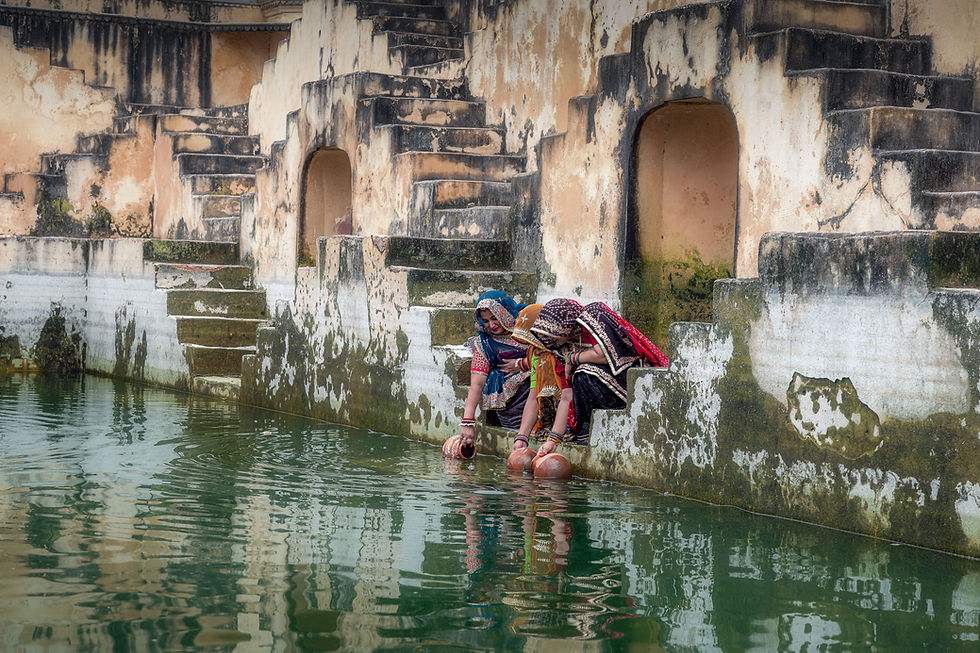


Bayan Olgii - Mongolia
The Kazakh Eagle Hunters of Mongolia

Tucked into the rugged Altai Mountains of western Mongolia, Bayan-Ölgii Province is home to the Kazakh eagle hunters—a centuries-old tradition where golden eagles partner with humans to hunt across snow-covered steppes. For portrait and action photographers alike, this region offers a once-in-a-lifetime chance to capture one of the world’s most visually compelling cultural traditions.
There is a Golden Eagle Festival in early October, where hunters from remote villages gather to showcase their talents on horseback and with their birds. It can be a great opportunity to see a number of hunters in one place, but can also be very busy. We operate guided tours to Mongolia, including Bayan-Olgii in August, when the hunters are refining their skills for the festival. It provides an amazing opportunity to spend quality time with the best hunters, photographing them both in action and close up to highlight the relationship between human and animal.
For portraits, take the time to connect with your subject—many eagle hunters are proud to share their heritage. Photograph them in traditional attire, with embroidered coats and fur-lined hats, alongside their majestic birds perched on leather-clad arms.
For action shots, prepare for fast shutter speeds and cold fingers. Whether it’s the eagle launching into flight from the hunter’s glove or galloping horseback chases across the terrain, a 70–200mm lens and a burst-capable camera will help capture the energy and motion of these incredible scenes. Light is often dramatic —sharp, low, and golden—perfect for contrast-rich compositions.
We work closely with a local guide —not only for translation, but for arranging access to nomadic families and off-the-beaten-path locations.
Photographing the eagle hunters of Bayan-Ölgii is more than an assignment—it’s a cultural exchange that honors resilience, symbiosis with nature, and a living tradition passed from father to son. Your images will tell stories not just of skill and spectacle, but of identity, pride, and timeless connection.
If visiting Mongolia, it is also essential to visit Gobi Desert and photograph the nomadic local people with their bactrian camels. The infinite dunes of the desert landcsape create a dynamic compsotion for the camels and handler, especially close to sunrise or sunset when the golden light and shadows create beautiful contrasts.

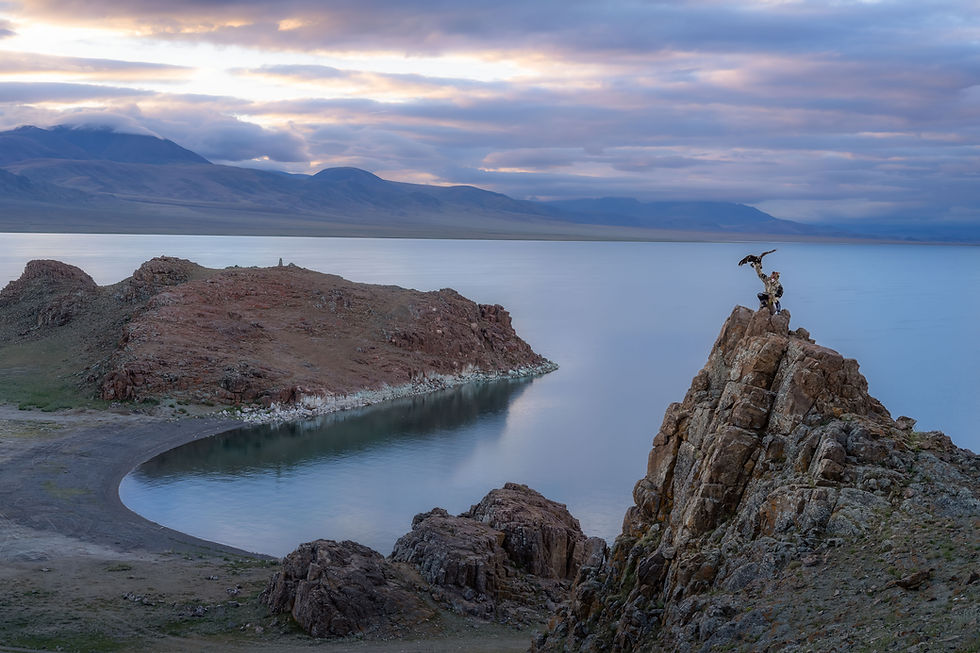



Omo Valley - Ethiopia
Faces Of The Omo Valley

In southern Ethiopia lies the Omo Valley, one of the most culturally rich and visually striking regions in Africa. Home to over a dozen distinct tribes, the valley offers an unparalleled opportunity for portrait photographers seeking powerful human stories, vivid adornment, and deep cultural resonance.
Tribes such as the Hamar, Suri, Karo, and Bodi each bring unique aesthetics to the lens - be it the lip plates and floral headdress of the Suri women, the body paint and beautiful landscape of the Karo, the traditional body scarification of the Bodi, or the ochre-covered braids and beaded jewellery of the Hamar. These expressions are not costumes - they are living traditions, each telling a story of identity, status, and heritage.
I guide a photography tour each December to Omo Valley, with a focus on capturing culture through portrait photography. We use a combination of natural light, portable studio and landscape photography. This is an ideal way to experience Ethiopia and get unparalleled access to the tribes for photography. We work with a trusted local guide —not just for translation and access, but for navigating the ethical complexities of photographing indigenous communities. The best portraits come from mutual respect, not just curiosity.
Tip: Many communities expect a small fee for photographs, which is both customary and appreciated. More importantly, spend time with your subjects. A few minutes of genuine connection can make all the difference in the emotion and depth of your images. We also took practical gifts such as soap, razor blades for hair, fish hooks, paper & pencils and small souvenirs of our own homes. These were much loved and the sense of gratitude for even the smallest gifts is extremely humbling.
The Omo Valley isn’t just a place to take pictures—it’s a place to listen, to learn, and to witness the beauty of human diversity in its rawest form. Bring your camera, but more importantly, bring your humility. From an personal experience perspective, this was probably my favourite photography travel destination.
Blog Post Link: Faces Of Omo Valley
Photo Tour Link: Omo Valley, Ethiopia


Kara Tribe - Omo Valley, Ethiopia


Samarkand, Uzbekistan
The Old Silk Road
In the heart of Uzbekistan, Samarkand rises like a jewel of the Silk Road—steeped in history, bathed in turquoise, and built to dazzle. For photographers, this ancient city offers a mesmerizing blend of architecture, culture, and light. Two of its most iconic sites—the Registan and Shah-i-Zinda—stand as living monuments to Islamic art and Timurid grandeur, perfect for both wide-angle compositions and intricate detail shots.
The Registan, a vast public square flanked by three towering madrasas, is the crown of Samarkand. Arrive just after sunrise to catch the warm light brushing against the mosaic facades of Ulugh Beg, Sher-Dor, and Tilya-Kori madrasas. The early hour offers quieter moments and rich shadows to enhance the geometry and scale. Later in the day, this location becomes very busy with tourists. It is possible to hire traditional dresses and photograph with a model, creating stunning compositions in the archways lined by mosaic. It is a fantastic place to play with angles and compositions - everything from wide angle, abstracts and details.
A short distance away lies Shah-i-Zinda, a necropolis that feels more like a sacred corridor of light and color. This narrow avenue of mausoleums is lined with some of the most detailed tilework in the Islamic world. Arrive mid-morning, when the sun peeks over the domes and spills soft light into the alley, bringing out the deep blues and aquamarines. This site is ideal for detail shots and portraits—whether it’s capturing the quiet expression of a pilgrim, the textured script on a tomb, or the perfect symmetry of arched doorways.
Tip: It is important to remember that these places are still functioning mosques, madrasas and mausoleums. In the case of Shah-i-Zinda, people will come daily to pay their respects. For this reason, respectful behaviour and conservative dress is required.
Uzbekistan is an incredible travel destination and there are many more photo opportunities in Samarkand and other cities. If visiting Uzbekistan, definitely include;
Tashkent: especially the totally unique metro stations.
Fergana Valley: home to amazing artisans.
Bhukara: the area around Po-i-Kalyan
Khiva: the beautiful ancient city
We have a photo tour that takes in all the incredible destinations in Uzbekistan in a journey along the old silk road.
Blog Post Link: Exploring The Colours Of Samarkand.
Photo Tour Link: Exploring The Old Silk Road


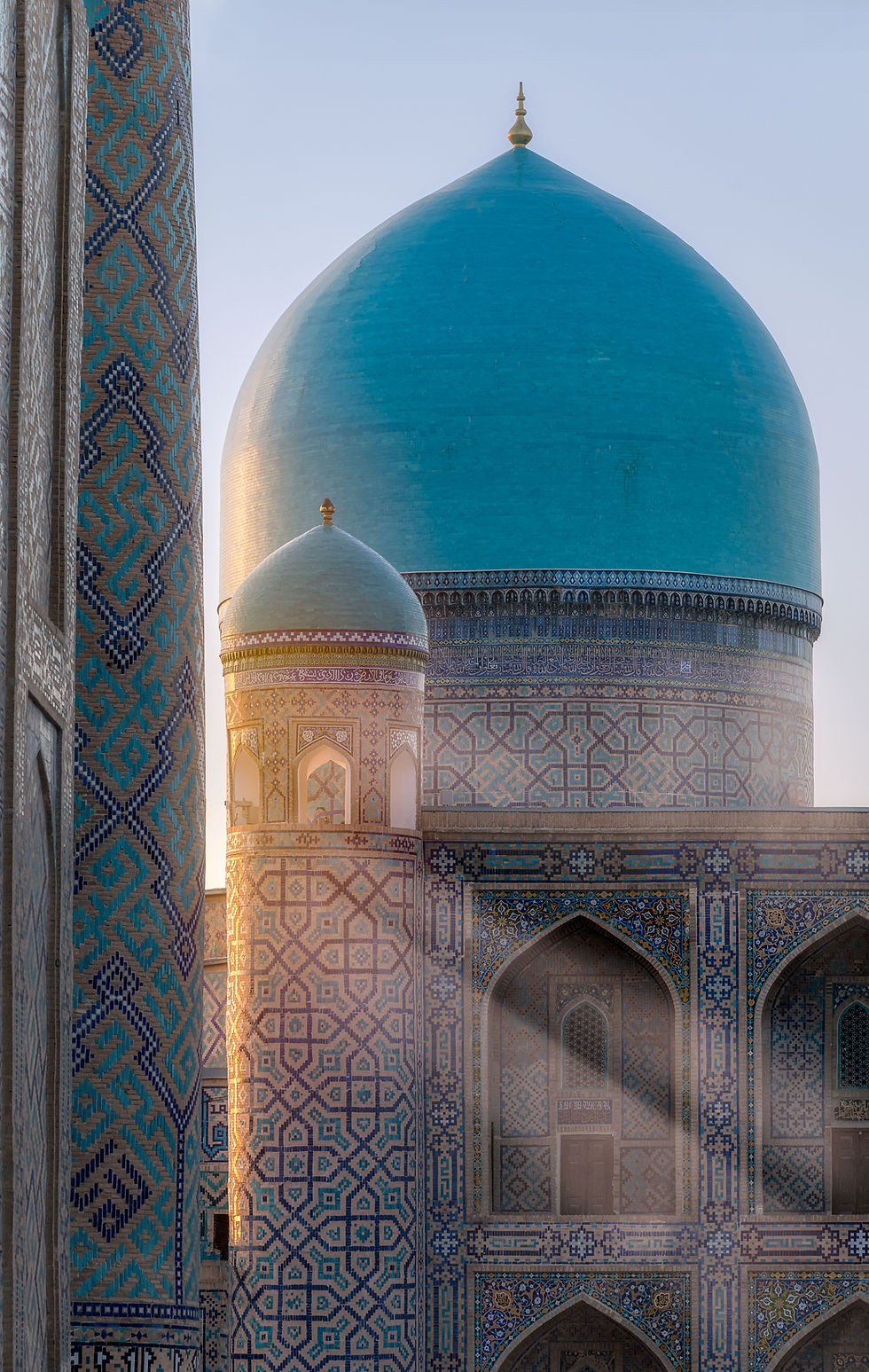



Fall Season In Japan
The Colours Of Momiji

Japan’s autumn—koyo season—is a spectacular display of crimson maples, golden ginkgo, and amber larches. For photographers, it’s a season of soft light, rich color, and serene landscapes that transform into vibrant masterpieces. From the iconic silhouette of Mount Fuji to the traditional charm of Kiso Valley and the temple-draped hills of Kyoto, fall is an incredible time to explore Japan.
There are few more iconic landscapes in Japan than Mount Fuji and accompanied by fall colours, this is an image that every Japanese photographer craves to have in their collection. The Five Lakes region, especially Lake Kawaguchiko, offers postcard-perfect scenes: vibrant foliage in the foreground, calm water reflections, and Fuji rising majestically in the background. You can also visit Momiji Corridor and Cheurito Pagoda for some classic fall images.
Stepping into the Kiso Valley feels like walking through a scroll painting. The ancient Nakasendo Trail winds through Edo-era post towns like Magome, Narai-juku and Tsumago, surrounded by maple-laced forests and misty mountain air. The mix of traditional wooden buildings and natural scenery makes for atmospheric storytelling photography.
In Nagano, Matsumoto Castle provides one of the best opportunities to photograph a traditional Japanese castle - there are not many left standing and this is one of the finest examples. Early in the morning, you also have a good chance of low fog over the water surrounding the castle, creating some truly enchanting scenes.
In autumn, Kyoto becomes a living canvas. The contrast between centuries-old temples and fiery leaves is unforgettable. Eikan-do, Tofuku-ji, and Kiyomizu-dera are particularly magical, with their layered gardens and sweeping viewpoints. Many places around Kyoto become extremely busy, so visiting locations like Arashiyama and Fushimi Inari are best done early in the morning.
Not too far from Kyoto is Daigo-ji, perhaps my favourite of many temples in Japan for photography. The small lake and temple, surrounded by red maples, is such a perfect composition, especially late in the afternoon with some warm light.
Tip: Both the Sakura (Spring cherry blossom season) and Momiji (red maple season) are extremely busy time sin Japan, with photographers and tourists rushing to experience these swift events. It can be challenging to predict exactly when the seasons will start and where the leaves will start changing colour first. Even finding accomodation can be challenging. We run photography tours in November every year, taking photographers to some of the most iconic spots and also some hidden gems! These tours are the best way to access the most number of photographable locations to create a wonderful portfolio of images.



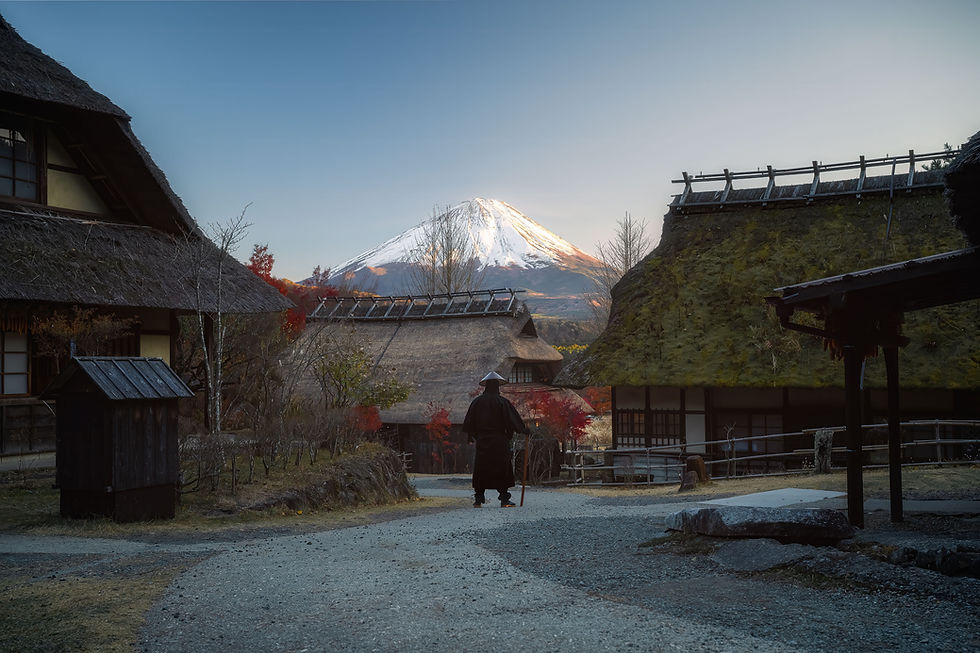

Downtown Dubai - United Arab Emirates
The World's Most Photogenic Skyline

Few, if any, cities in the world boast the cityscape appeal of Dubai. The Downtown skyline is a futuristic marvel rising from the desert—an irresistible subject for cityscape photographers. Anchored by the iconic Burj Khalifa, the world’s tallest building, this skyline blends towering ambition with elegant design, especially when captured at the right time and angle.
Dubai’s Downtown isn’t just a skyline—it’s a bold statement in glass and steel. From dusk reflections to glowing night scenes, it offers photographers a canvas that’s as modern as it is majestic.
Tip: Access and permission to take photos using a “professional camera” and tripod can be a tricky issue in Dubai. Many public places do not allow use of a DSLR/mirrorless camera or a tripod. Many photographers make use of balconies and terraces from hotels to get vantage points and it is always a great idea to book a hotel that has a great view so that you can make use of this during a visit.
Perhaps the most iconic view of the Dubai skyline is from Shangri-La hotel - the terrace on the 42nd floor looks towards Burj Khalifa, with the futuristic Address Skyview and captivating “spaghetti intersection” in the foreground. If you are staying at Shangri La, you will be allowed to photograph from the terrace if it isn’t being used for an event. Sunrise is almost always available and best to check about sunset time.
Other hotels that have balconies or terraces with great views include; Four Points Sheraton (Sky View Lounge), Address Downtown, Address Fountain Views, Address Skyview and Damac Maison Distinction.
There are also some great vantage points of the skyline from the ground, however these are becoming harder to photograph from without a permit. These places include Dubai Creek Harbour, Jaddaf Walk and Dubai Design District.
Don’t make the mistake in cityscape photography of always focusing only on the most obvious composition. There are always lots of abstract frames, unique angles and varieties of technique that cam create incredible images. You can utilise everything from wide angle through to telephoto.
I use a lot of exposure bracketing with cityscape photography to overcome the dynamic range around sunset and blue hour, especially with some of the very bright signs and shadows caused by silhouetting at sunset.
In winter, there is always a chance of the famous Dubai fog. It is highly unpredictable and mornings with iconic thick fog happen only a couple of times a year. The peak season is late January to early March and you will need access to a high balcony (above 40 floors).
Something else that can be really fun in Dubai is to align buildings like Burj Khalifa with the moon. Utilising the PhotoPills app, it is possible to set your camera up in exactly the right place at the right time and capture really breath-taking images of the moon behind the building that generate a totally unique perspective.
I run tour for PhotoPills, Iceland Photo Tours and private tours each year through the winter. We photograph many locations in Dubai and around the United Arab Emirates.





Disko Bay - Greenland
Red Sails In Greenland

Tucked along the west coast of Greenland, Ilulissat is a surreal meeting point of Arctic ice and human adventure. It’s here, among towering icebergs and cobalt fjords, that the now-iconic red sailboats, made famous by photographer Daniel Kordan, cut dramatically through glacial waters—an irresistible subject for landscape photographers seeking contrast, scale, and silence.
This UNESCO-listed region is home to the Ilulissat Icefjord, where icebergs—some the size of skyscrapers—calve off from the mighty Sermeq Kujalleq glacier, drifting slowly through the bay. Against this stark white and blue palette, the deep red sails become a perfect focal point.
The only real way to experience this is part of Daniels photo tours - run by Iceland Photo Tours. Guests spend the photography sessions on one of the two red sail boats - one boat “models” amongst the icebergs, while guests on the other boat take photos. Then they switch. During late summer and early Autumn, the time for incredible light is seemingly endless as the midnight sun kisses the horizon.
In addition to photographing the red sails, the icebergs themselves are amazing subjects for landscape and abstract images. There are also populations of whales that will at times breach. The photo tours also visit the nearby village of Rode Bay, where traditional houses are dotted on the coastline and sled dogs relax during their off season. There is also a beautiful church in Illulisat and when the sky lights up around sunrise it is a stunning frame.
Drone photography is permitted outside the exclusion area (in proximity to the airport). This offers a completely unique perspective of the icebergs. It can be “risky” launching drone from the boats and photographers need to be confident in take-off and landing by hand.
This photo tour has been operating for several years now and the images have become “must-have” for many travel photographers.
Illulisat isn’t the easiest place to reach. Most will fly into Greenland through Kangerlussuaq or the capital Nuuk. There is also a direct flight from Iceland to Illulisat.
Ilulissat offers a dreamlike Arctic experience—where stillness reigns, color speaks volumes, and the dance between ice and sail becomes a timeless photographic story. Capturing that red boat isn't just about the shot—it’s about witnessing one of the quietest, most awe-inspiring places on Earth.



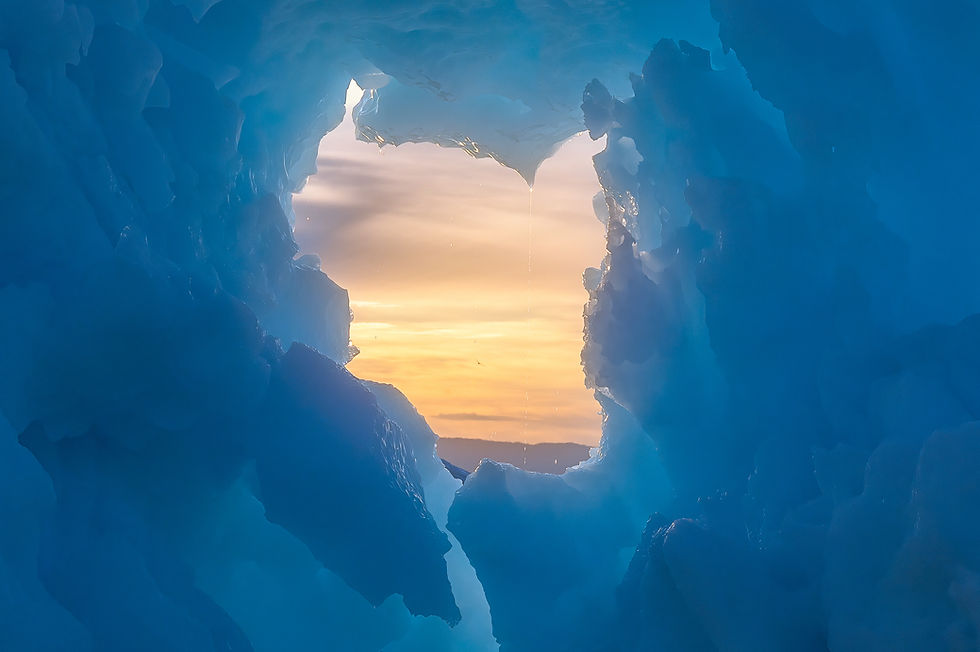


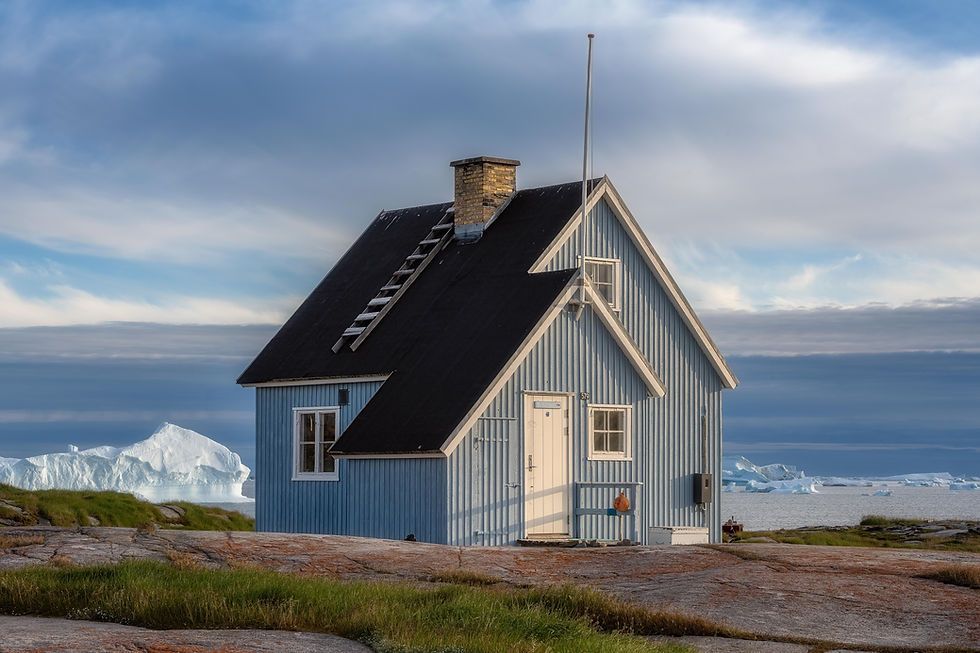
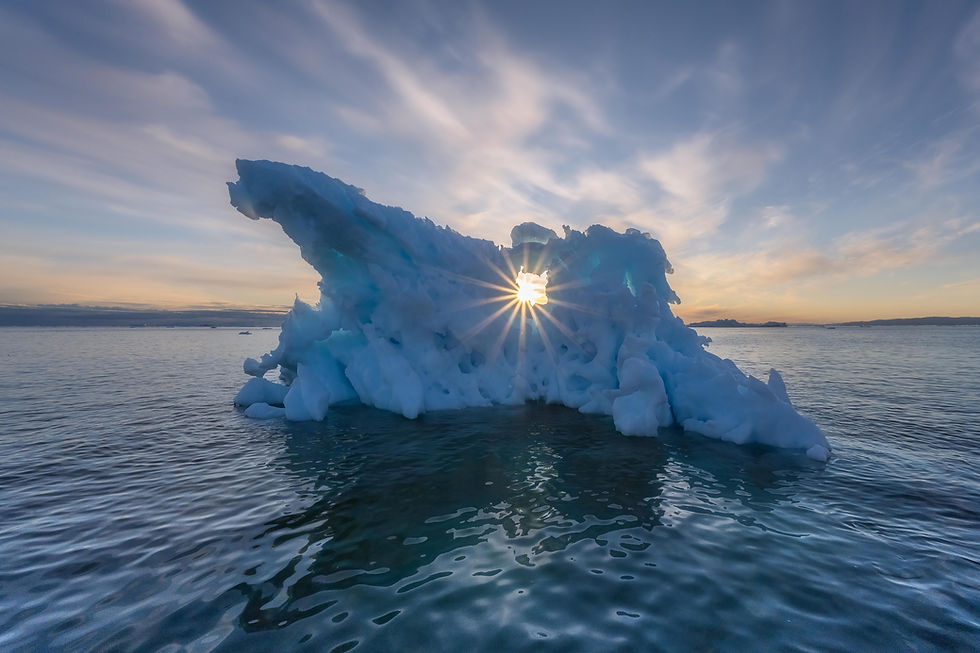

Iceland
Chasing Watrerfalls in the Land of Fire & Ice

Iceland is a raw and restless land—where waterfalls tumble from volcanic cliffs, glacial rivers carve ancient canyons, and bird’s-eye views reveal surreal patterns few places on Earth can match. For photographers, it’s a playground of light, motion, and elemental drama.
No trip to Iceland is complete without photographing its legendary waterfalls.
Seljalandsfoss offers a rare 360° composition—walk behind it for a dramatic curtain of water framed by cliffs and sky.
Skógafoss, powerful and symmetrical, is best shot from below with a wide-angle lens and a waterproof cover—it’s misty!
Gullfoss roars with layered grandeur; try long exposures (using ND filters) to smooth the water while capturing the golden light that often cuts through the mist.
Kirkjufellsfoss, a classic, layered Icelandic composition with the relatively small waterfall in the foreground and the arrowhead shaped mountain in the background. Visit at sunset or during the Northern Lights season for the most dramatic light and sky action.
Shoot early or late to avoid crowds and catch dramatic skies. Even on overcast days, the soft, diffused light is perfect for waterfall textures and color.
Iceland’s canyons are sculptural and cinematic:
Fjaðrárgljúfur Canyon, with its moss-covered walls and winding river, looks like something out of a fantasy film. Use a drone or climb to the upper viewpoints for sweeping leading lines.
Studlagil Canyon, with its basalt columns and turquoise glacial river, is stunning from both ground level and above. Shoot midday on clear days to make the water pop.
Iceland is one place that it can benefit to include a human element in your composition for perspective - to demonstrate the sheer size and power of the waterfalls and canyons.
With a drone, Iceland becomes an abstract art gallery. Glacial rivers weave in braided patterns of silver, blue, and black sand. Volcanic plains and geothermal areas reveal fiery streaks and mineral swirls.
Fly over Landmannalaugar for colorful rhyolite mountains.
Explore river deltas near Þjórsá for hypnotic shapes.
Always check local regulations and weather conditions—wind changes fast, and drone use is restricted in some areas - especially around waterfalls or bird populations.
In recent years, active volcanoes have added a dramatic element for photographers, spontaneously erupting and providing unique views of colour and drama.
Iceland is where the planet feels alive—shaped by water, fire, and time. With every shot, you’re not just capturing beauty—you’re documenting the pulse of the Earth itself.

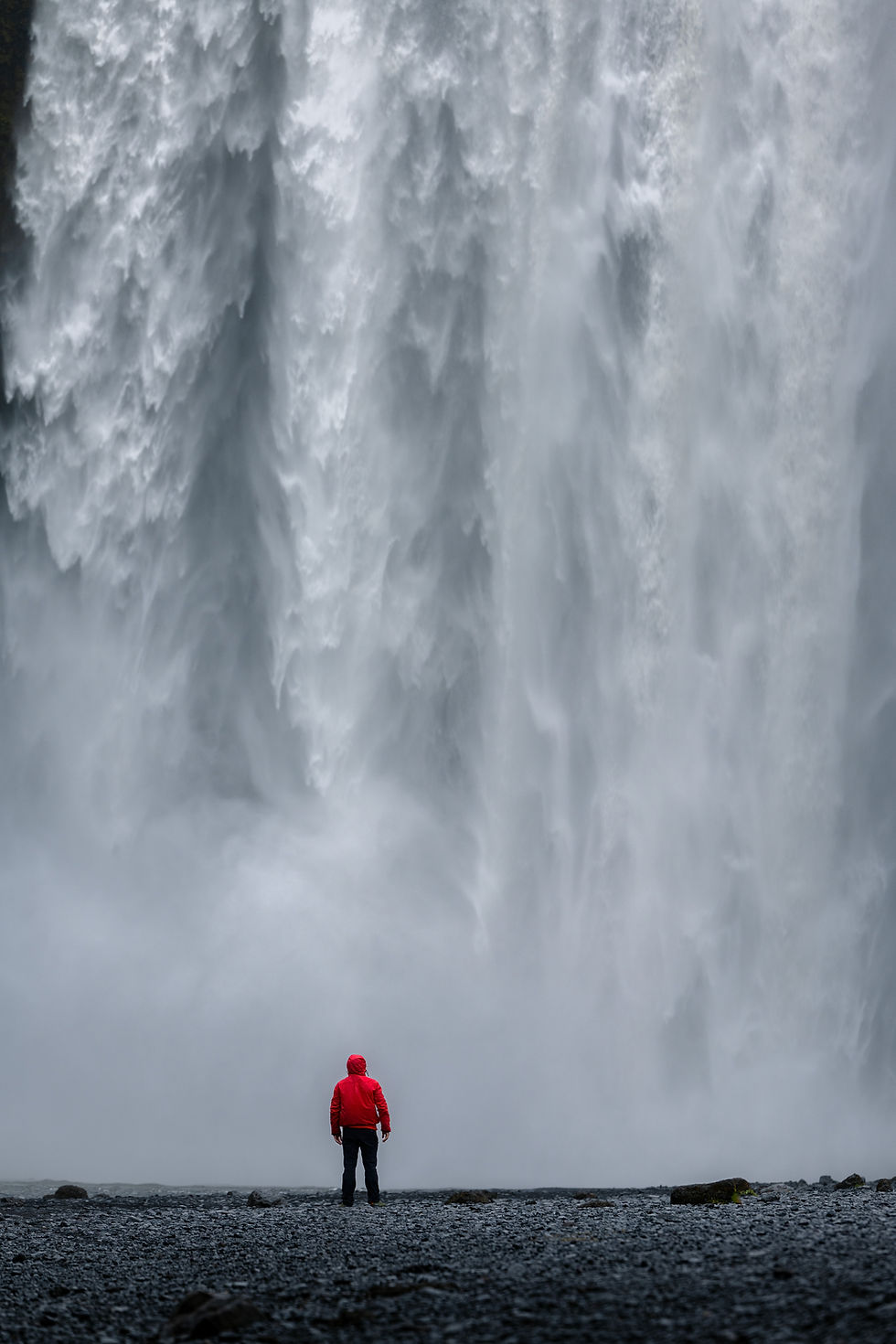







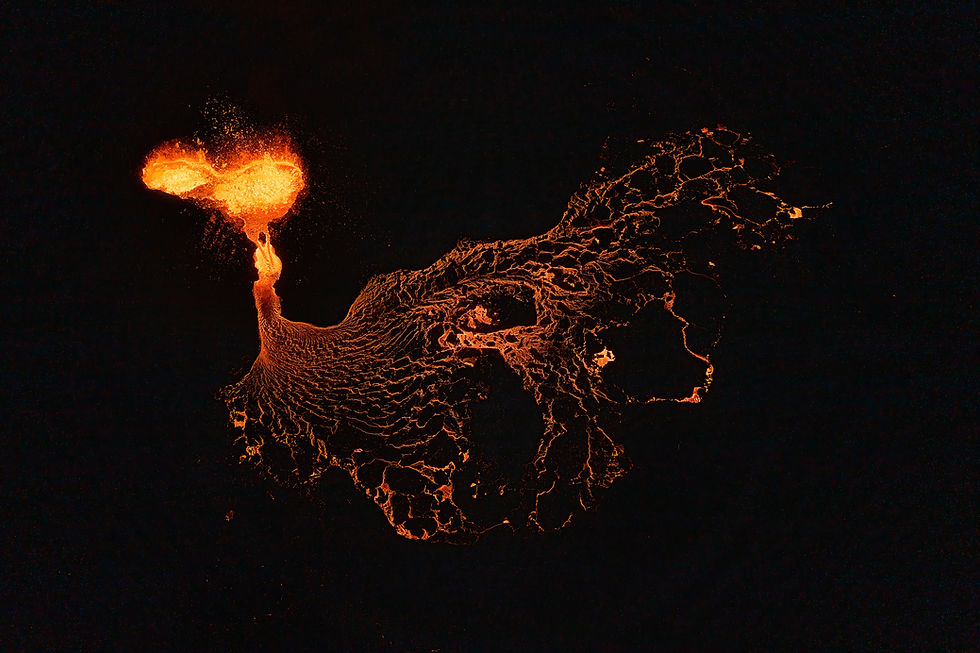
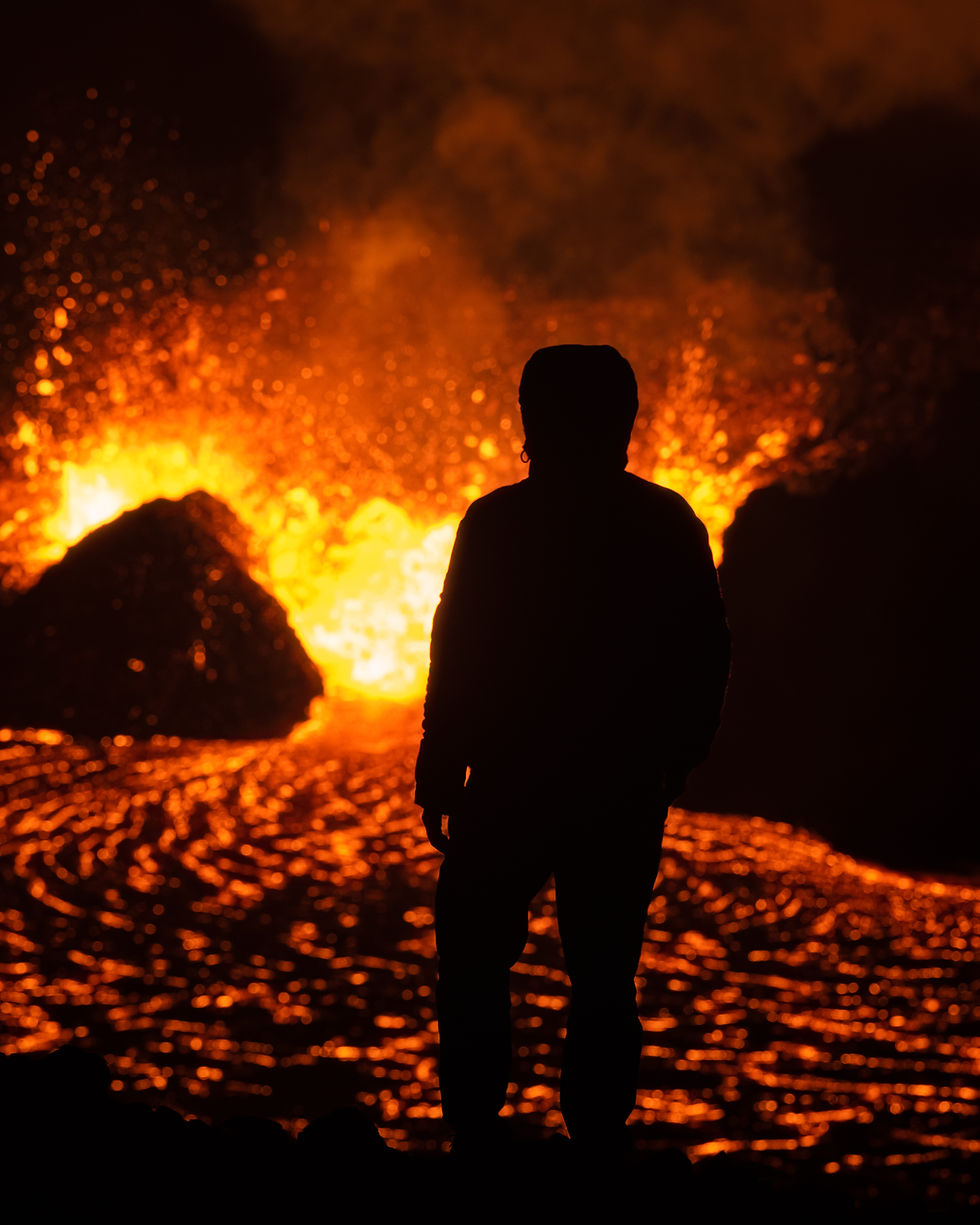



























Comments